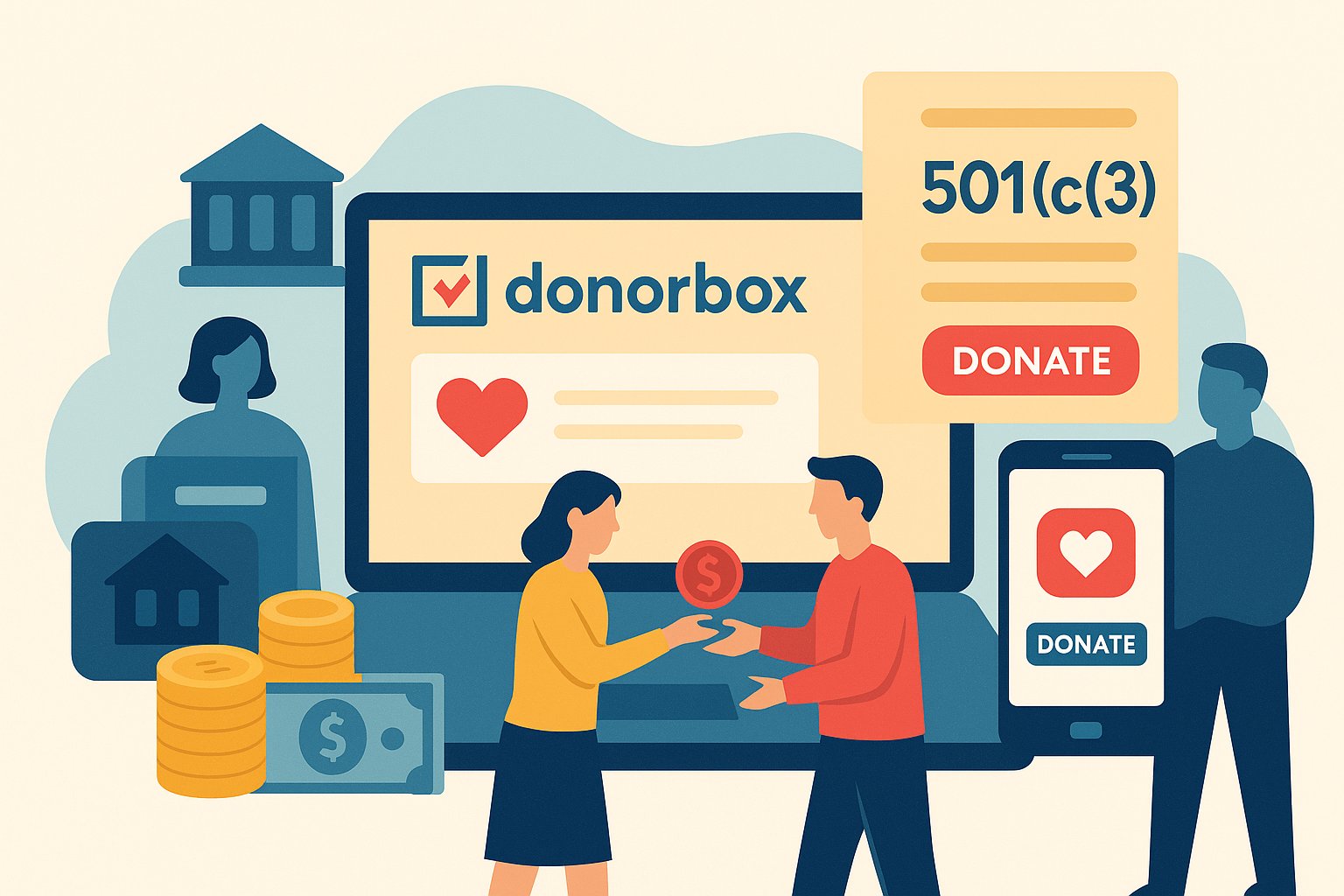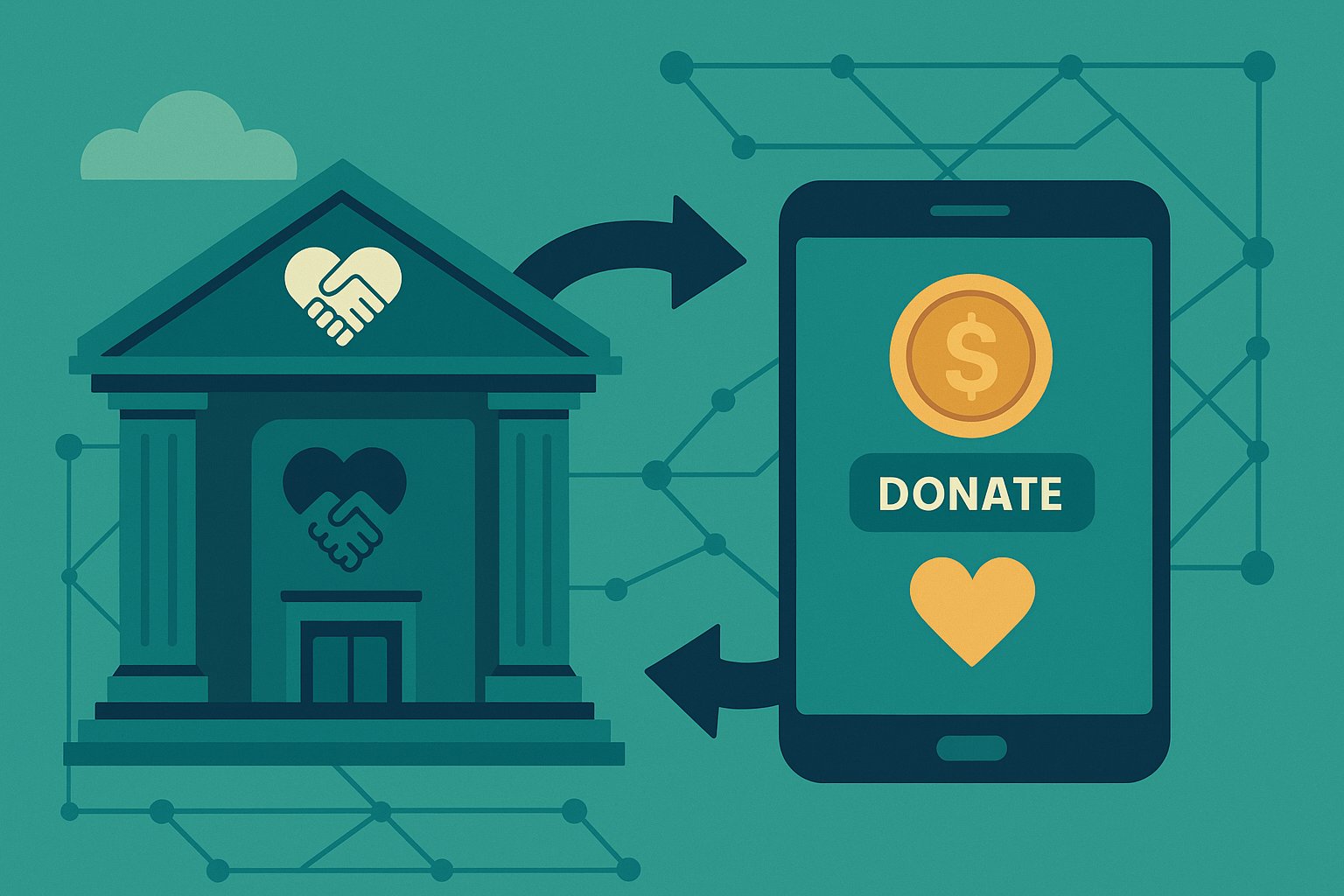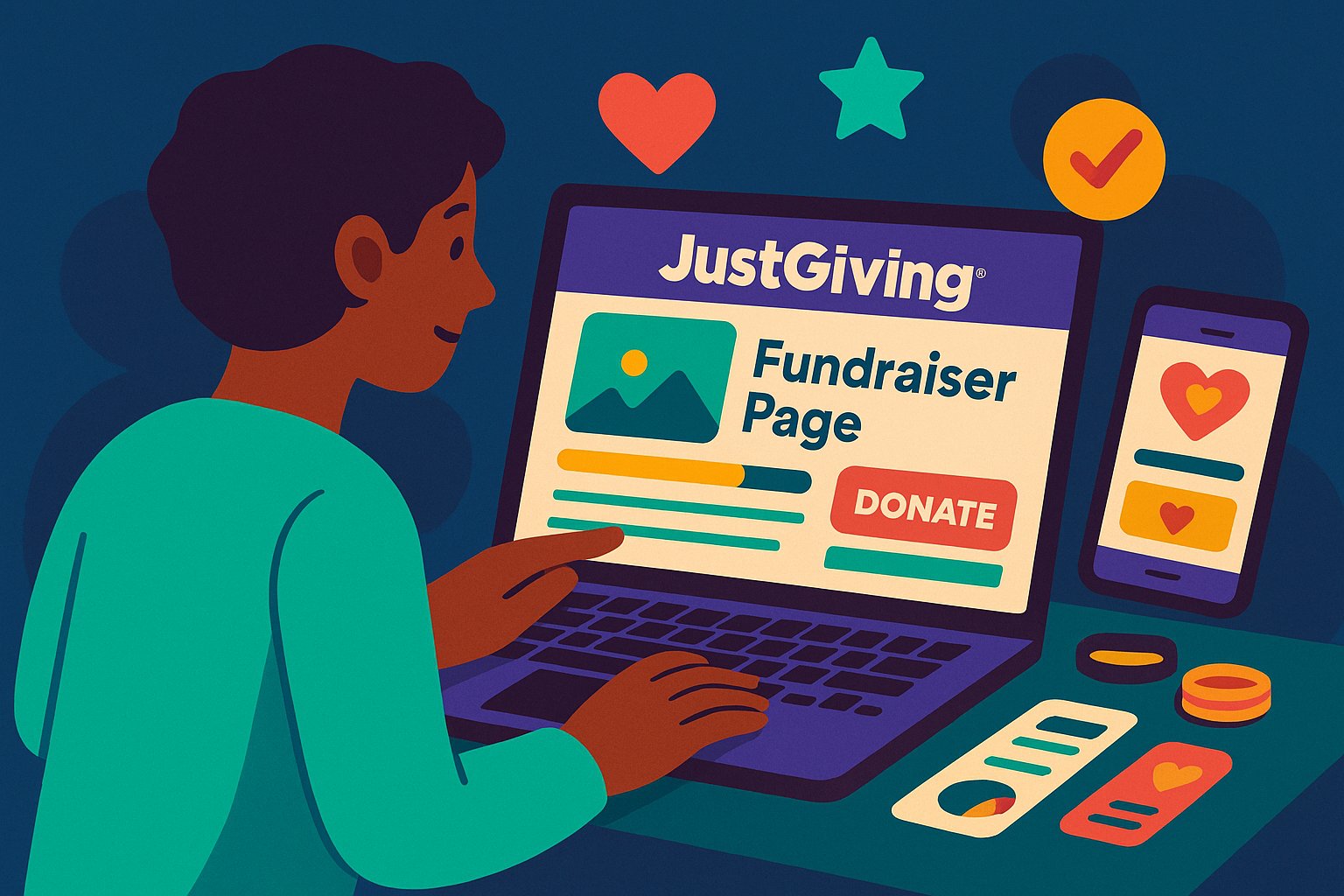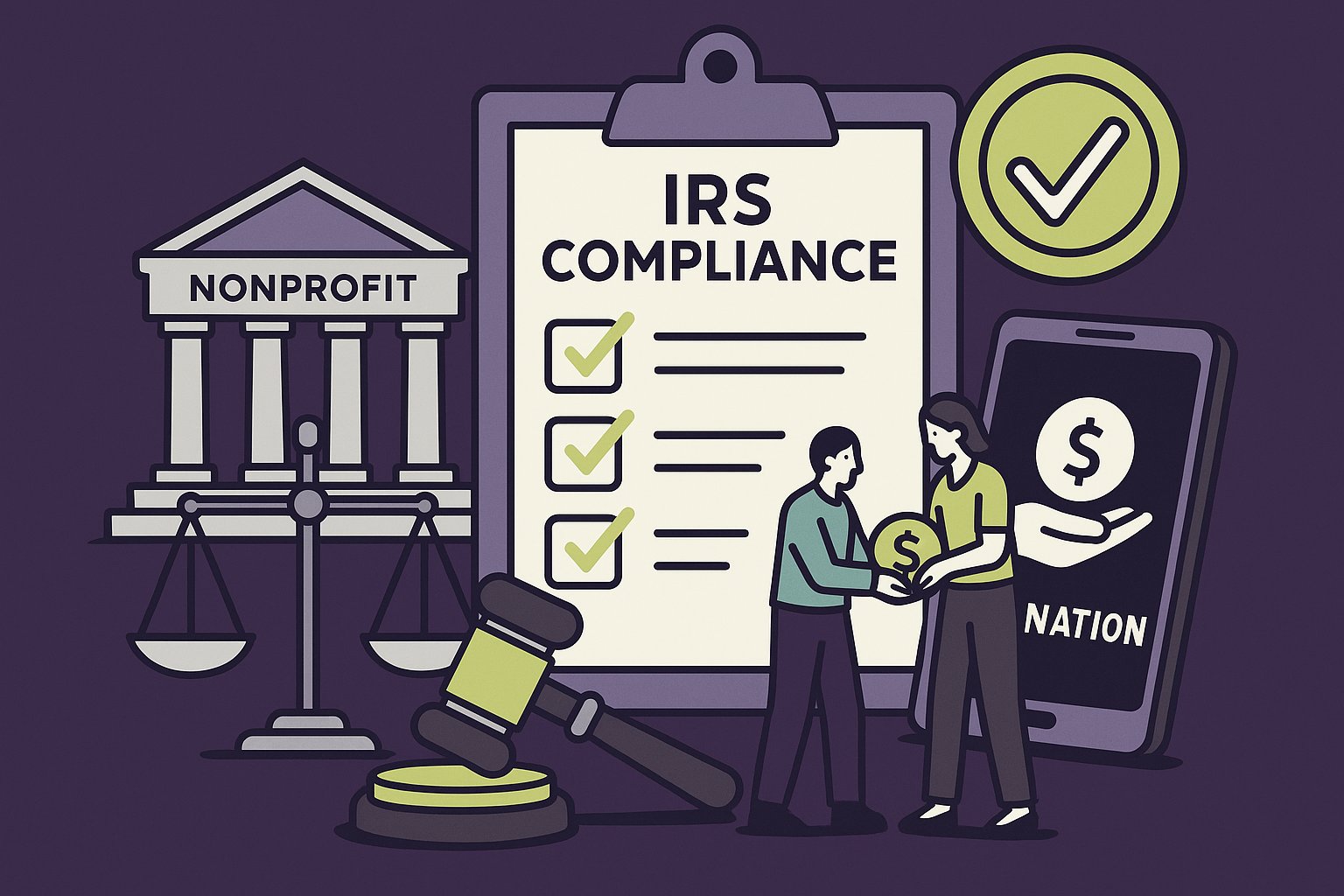Setting the Stage for Powerful Crowdfunding with Donorbox
Crowdfunding has become an indispensable tool for 501(c)(3) organizations seeking to amplify their mission, engage supporters, and secure essential funding. In a digital landscape crowded with donation platforms, Donorbox stands out as a user-friendly, feature-rich solution that caters specifically to nonprofits. Whether you are launching a time-sensitive capital campaign or building ongoing support through monthly giving, Donorbox’s flexible toolkit accommodates organizations of all sizes. To truly harness its potential, however, requires more than simply adding a donation widget to your website. This guide dives deep into strategies and best practices for maximizing Donorbox’s functionalities—from creating persuasive campaign pages to leveraging powerful analytics—while ensuring your 501(c)(3) status and donor relationships remain rock solid. By blending creativity, technical insight, and nonprofit know-how, you can transform Donorbox into a central hub for sustainable crowdfunding success.
Unpacking Donorbox’s Unique Capabilities
At first glance, Donorbox presents itself as a sleek donation form provider, but beneath its clean interface lies a robust suite of tools designed to accelerate fundraising. The platform supports recurring donations, which are a cornerstone of reliable revenue streams for nonprofits. It also integrates seamlessly with popular content management systems—such as WordPress, Wix, and Squarespace—allowing organizations to embed donation forms without jeopardizing site performance. Beyond simple donation buttons, Donorbox offers dedicated crowdfunding pages with customizable themes, peer-to-peer fundraising modules, and integration with major payment gateways like Stripe and PayPal. For compliant 501(c)(3) operations, it also facilitates automated receipt generation, ensuring donors receive proper substantiation for tax-deductible gifts. By understanding these core functionalities—and how they align with your nonprofit’s objectives—you can begin constructing a fundraising framework that uplifts your cause, streamlines operations, and nurtures long-lasting donor relationships.
Fine-Tuning Your 501(c)(3) Profile for Trust and Credibility
Before launching any campaign, your organization’s credibility must shine through. Donorbox allows nonprofits to display their tax-exempt status, Employer Identification Number (EIN), and mission statement prominently on donation forms and campaign pages. For prospective donors conducting due diligence, seeing a clear “501(c)(3) charity” designation alongside an easily verifiable EIN builds confidence. Craft a succinct yet compelling “About Us” section that highlights your cause’s impact, core programs, and geographical footprint. Complement this narrative with a professional logo and a brief video or photo collage that visually communicates your organization’s spirit. When donors visit your Donorbox landing page and immediately sense transparency and authenticity, they are far more likely to convert. Additionally, if your nonprofit operates in states with specific charitable solicitation registration requirements, ensure that those details are up-to-date and mention compliance where appropriate. By anchoring your Donorbox profile in trustworthiness, you set the stage for successful crowdfunding.
Designing Campaign Pages That Resonate
With your nonprofit’s foundation established, the next step is crafting a Donorbox campaign page that captures hearts and wallets alike. While many organizations default to generic templates, tailoring your page to your audience’s sensibilities can significantly boost engagement. Start by choosing a compelling headline that highlights urgency or impact—for instance, “Empower 100 Students with School Supplies” rather than “Annual Back-to-School Drive.” Pair this with a hero image that depicts real beneficiaries—smiling children, families in need, or volunteers in action—to humanize the cause. In the campaign description, weave a narrative that answers the “why” before the “what”: share a brief anecdote about someone directly helped by your programs, then explain how donor contributions will create similar success stories. Strike a balance between emotional appeal and factual clarity by including specific metrics: for example, “A $25 donation provides textbooks for one student; $100 covers a full scholarship.” End the description with a concise call to action, inviting donors to become “Champions of Change.” By infusing your Donorbox page with authenticity, vivid storytelling, and clear outcomes, you motivate supporters to act decisively.
Harnessing Customizable Donation Forms for Maximum Conversions
Donorbox’s core strength lies in its donation form versatility. Instead of relying on default amount presets, consider configuring suggested donation levels that reflect your campaign’s cost structure. For instance, if your nonprofit is raising funds for community gardens, you might propose tiers like $20 for a seed packet kit, $50 for soil and tools, and $150 for a full raised-bed installation. These tiered options help donors visualize their impact and simplify the decision-making process. Use Donorbox’s recurring donation feature to encourage monthly contributions; emphasize the benefits of sustained support by illustrating how small, regular gifts translate into ongoing community improvements over time. Additionally, leverage the form’s customizable fields to collect pertinent data—such as household size or volunteer interests—so you can tailor future communications. Keep the form short, minimizing required fields to reduce friction, but capture essential information like email addresses to facilitate follow-up. Finally, integrate Donorbox forms with your website’s design by adjusting colors, fonts, and button styles for a seamless user experience. By optimizing every element of your donation form, you lower barriers to giving and increase conversion rates.
Engaging Donors Through Automated Communication Workflows
In the fast-paced world of online fundraising, instant and personalized communication can mean the difference between a one-time gift and a lifelong donor. Donorbox offers automated email receipts and thank-you letters that can be customized to reflect your nonprofit’s voice. The moment a donation is processed, donors receive a prompt acknowledgment containing details for tax deductions, along with a heartfelt message expressing gratitude. Take this further by setting up segmented drip campaigns: for example, tier donors by gift size or track project-specific contributions, then deliver tailored follow-up messages that highlight the direct results of their contributions. If a donor gives $500 toward a medical outreach campaign, send them a brief impact report showcasing how that funding provided vital care to a patient. Incorporate quarterly newsletters—automatically triggered through Donorbox’s integrations with CRM systems—that spotlight upcoming events, volunteer opportunities, and success stories. By nurturing donor relationships through consistent, relevant touchpoints, you transform one-time supporters into passionate advocates who feel genuinely connected to your organization’s mission.
Seamless Integration with Your Nonprofit’s Digital Ecosystem
Running a successful crowdfunding campaign requires more than just a stand-alone donation page; it involves weaving Donorbox into your broader digital infrastructure. Whether your nonprofit’s website is built on WordPress, Squarespace, or custom HTML, Donorbox’s embed codes and plugins make integration straightforward. Let’s say you maintain an email marketing platform like Mailchimp or Constant Contact: by linking Donorbox with these systems, new donor information can flow directly into email lists, eliminating manual data entry. Similarly, integrate Donorbox with your customer relationship management (CRM) software—such as Salesforce Nonprofit Cloud or Bloomerang—to synchronize donor profiles, track interactions, and generate detailed reports. Social media integration is another key element: include “Donate Now” buttons on Facebook Fundraisers that connect to your Donorbox page, or share campaign-specific links on Twitter and Instagram stories. In addition, ensure your website’s SSL certificate is up-to-date to maintain donor trust regarding payment security. By embedding Donorbox within a cohesive digital framework, you create frictionless pathways for giving and amplify your nonprofit’s online presence.
Leveraging Peer-to-Peer Fundraising Dynamics
One of the most potent ways to expand your crowdfunding reach is by enlisting your supporters as virtual ambassadors. Donorbox offers a peer-to-peer fundraising module designed to empower individuals to create personalized fundraising pages on behalf of your nonprofit. Encourage volunteers, board members, or enthusiastic donors to establish their own mini-campaigns—complete with custom text, profile photos, and fundraising goals—under the umbrella of your main project. When supporters see friends and family members advocating for a cause they care about, they are more likely to contribute. To kickstart peer-to-peer efforts, host a virtual “Kickoff Rally” where you introduce the fundraising toolkit, provide guidelines on sharing compelling stories, and offer incentives like “Top Fundraiser” recognition. Utilize Donorbox’s leaderboard feature to create friendly competition among peer fundraisers, fostering excitement and camaraderie. Equip each participant with a digital media kit—email templates, social media graphics, and suggested messaging—that aligns with your nonprofit’s branding. By tapping into peer networks, you exponentially broaden your donor base and fuel a sense of community-driven momentum around your cause.
Interpreting Donorbox Analytics for Continuous Improvement
Even the most visually stunning campaign will struggle without data-driven decision-making. Donorbox provides a comprehensive analytics dashboard that tracks key performance indicators: total donations, average gift size, donor retention rates, and geographic distribution of supporters. By monitoring real-time metrics, nonprofit leaders can quickly identify trends and pivot strategies when necessary. For example, if you notice a surge in one-time donations during a particular week, analyze the corresponding communications or social media posts to determine which messages resonated most. Conversely, if recurring monthly gifts plateau, reassess how you’re positioning the benefits of ongoing support—perhaps by sharing a donor impact video demonstrating how consistent funding fuels stable operations. Geotargeting data may reveal untapped regions with enthusiastic audiences; leveraging that insight, you could schedule virtual town halls or localized social ads to drive further engagement. Regularly export Donorbox reports and cross-reference them with CRM data to evaluate donor lifetime value and predict future giving patterns. By embracing a culture of continuous measurement and refinement, your organization can optimize crowdfunding efforts for maximum ROI.
Addressing Common Hurdles in Donorbox Crowdfunding
No crowdfunding campaign is immune to challenges. One frequent obstacle is donor abandonment at the payment stage, often due to complicated forms or unexpected fees. To mitigate this risk, clearly state any processing fees upfront—Donorbox allows nonprofits to enable a “cover fees” option, whereby donors can choose to offset transaction charges, thereby preserving the full value of their gift. Another challenge emerges when campaigns stall after an initial fundraising surge. In these moments, refocusing the narrative can reignite momentum: share behind-the-scenes updates, personal beneficiary stories, or volunteer spotlights to remind donors of the human impact behind the dollars. Technical hiccups—such as integration errors or slow site load times—can also hamper giving; designate a tech lead who routinely audits page performance and tests donation forms across devices. Lastly, ensure that your team is prepared to respond promptly to donor inquiries: whether it’s a receipt request, tax deduction question, or clarifications about project timelines, swift, empathetic replies reinforce trust and keep supporters engaged. By proactively confronting these common pain points, your nonprofit can maintain forward momentum throughout the crowdfunding cycle.
Cultivating a Long-Term Crowdfunding Mindset
While one-off crowdfunding campaigns can yield impressive short-term results, the most successful 501(c)(3) organizations view Donorbox as part of a long-term fundraising architecture. To cultivate donor loyalty, consider implementing a structured stewardship plan: immediately after a gift, acknowledge donors with personalized emails or handwritten notes. Within 30 days, share a concise impact report showing how their contributions made a difference. At three- and six-month intervals, highlight stories of progress and invite donors to exclusive virtual events—perhaps a live Q&A with program beneficiaries or an online volunteer workshop. Consistently invite supporters to upgrade from one-time donors to recurring contributors by outlining how sustained funding sustains core programs. Additionally, leverage Donorbox’s “Unlock Achievements” feature to showcase milestones—such as reaching 50% of a campaign goal—and motivate donors to help push toward completion. By weaving in a cadence of meaningful touchpoints, you transform isolated transactions into ongoing partnerships, ensuring your nonprofit’s crowdfunding engine remains robust over time.
Ensuring Compliance and Security at Every Turn
As a 501(c)(3) organization, maintaining donor trust and regulatory compliance is paramount. Donorbox streamlines many compliance tasks by automatically generating donation receipts that comply with IRS guidelines for tax-deductible contributions. Nevertheless, your team should maintain an internal process to review and archive these receipts for audit readiness. Update your privacy policy to reflect Donorbox’s data handling practices, ensuring donors understand how personally identifiable information is collected, stored, and used. Additionally, monitor your credit card processing statements to confirm that fees and remittance timelines align with Donorbox’s published rates. If your nonprofit operates in multiple states, double-check any state-specific charitable solicitation registration requirements; platforms like Donorbox may direct out-of-state donors to pages with disclaimers or specific state disclosures. Finally, keep Donorbox’s platform version up to date and conduct periodic security scans on your website to guard against vulnerabilities. By instilling comprehensive compliance and security protocols, you safeguard donor data, fulfill your legal obligations, and reinforce your nonprofit’s reputation as a responsible steward of contributions.
From Campaign Launch to Legacy Building
Launching a successful crowdfunding initiative with Donorbox is both an art and a science. As you wrap up a campaign—celebrating final totals, acknowledging top supporters, and sharing impact videos—take time to conduct a thorough postmortem. Jointly review internal data, solicit feedback from donors via short surveys, and document lessons learned. Identify which messaging strategies yielded the highest engagement, whether social media ads outperformed email appeals, and how peer-to-peer fundraisers influenced overall giving. The insights gleaned from this analysis can inform future campaigns, ensuring you build on proven tactics and avoid pitfalls. Moreover, celebrate and share your success stories across multiple channels—website, social media, and newsletters—to create a virtuous cycle of transparency and inspiration. When prospective donors see that your nonprofit runs lean, compliant, and emotionally compelling crowdfunding drives, they are far more inclined to support subsequent initiatives. By treating each campaign as a stepping stone toward long-term growth, you utilize Donorbox not just as a fundraising tool, but as a platform for building a lasting legacy of impact.
Igniting Your Nonprofit’s Crowdfunding Trajectory
In the realm of 501(c)(3) crowdfunding, Donorbox emerges as a versatile ally—offering intuitive donation forms, seamless integrations, peer-to-peer modules, and insightful analytics. Yet, the true magic happens when nonprofits combine Donorbox’s technical prowess with storytelling finesse, data-driven decision-making, and unwavering commitment to donor relationships. From the very first click on a “Donate Now” button to the final impact report shared with your community, each interaction is an opportunity to strengthen bonds, showcase transparency, and underscore the tangible outcomes of every gift. By tailoring Donorbox to your organization’s unique mission, crafting compelling narratives, and embracing continuous improvement, you position your nonprofit for sustained success. As you embark on—or refine—your crowdfunding journey, let this guide serve as your roadmap. With strategic planning, creative energy, and the right digital toolkit, you can elevate your 501(c)(3) crowdfunding efforts to unprecedented heights, galvanizing supporters and unlocking new chapters of community impact.




